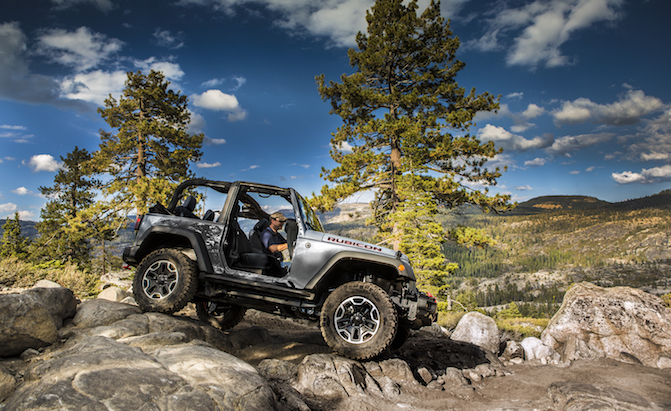When researching an off-roader, you will inevitably run into the terms approach and departure angles, which are also sometimes called ramp angles. And while you might be susprised to learn what trigonometry has to do with mud flinging, these are terms that can help you make a smart purchase.
To put it simply, the approach and departure angle govern the types of obstacles you can drive over without hitting your bumper when ascending or descending.
To picture this in your head, imagine a ramp. If the ramp is too steep and you were to try and drive up it, the front bumper of the vehicle will hit the ramp before the wheels have a chance to start climbing. So the maximum angle from the ground that the ramp can have without the front bumper hitting is known as approach angle, while at the rear end, it’s called departure angle.
SEE ALSO: 5 Things I Learned Ripping Through the Snow in a 2017 Ford F-150 Raptor
There is a third angle that is important for off-roading, known as the breakover angle. This is the angle between the bottom of your tires and the mid-point of vehicle’s underside. If the breakover angle is exceeded, it will leave the vehicle turtled, where all four wheels come off the ground and lose traction.
Approach, departure and breakover angles are governed by a number of vehicle design characteristics. The overhang of the bumper past the axles helps to determine ramp angles, along with the design of that bumper. For an ideal off-roader, you want a rounder bumper style or something that doesn’t stick out unnecessarily. The overall ground clearance of the vehicle will also determine what the ramp angles will be.

How To Measure Approach and Departure Angles
Manufacturers will provide the ramp angles for new cars, but if you’re looking to measure the angles yourself, it’s pretty easy. Take something long and straight like a broom or a yardstick and place one exactly where the front tire makes contact with the ground. Take the other end and lift it until it hits the lowest point at the front of your car, usually a piece of bumper. Throw a protractor at the bottom and check out the angle as compared to the ground and voila, you have your approach angle. Repeat these steps at the back for the departure angle.
Some examples of excellent ramp angles come from vehicles like the Jeep Wrangler, with an approach angle of 42.2, and the Toyota 4Runner, with an approach angle of 33 degrees.
So next time you’re off-roading and you’re not sure if you can drive up or down something, break out the protractor!



Leave a Reply